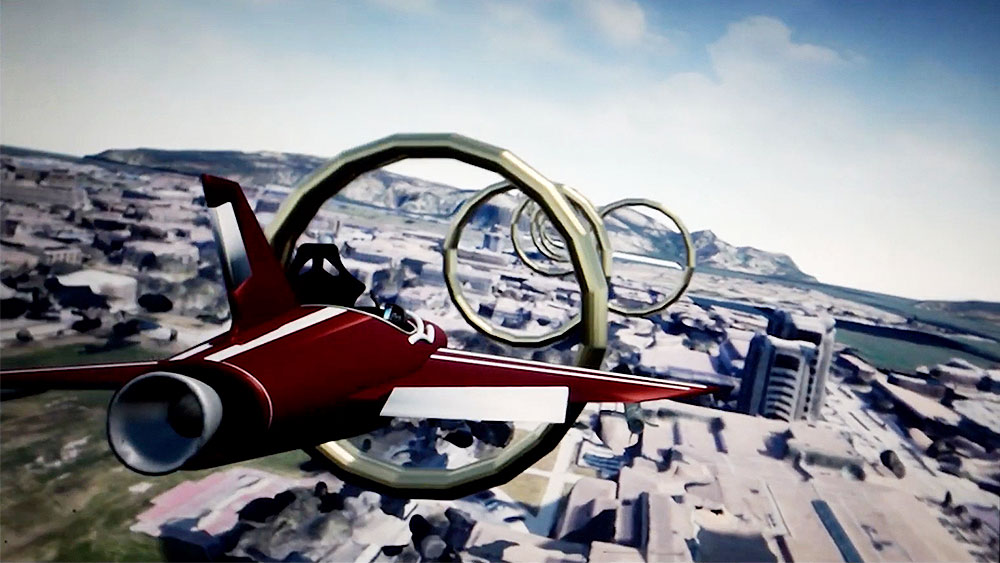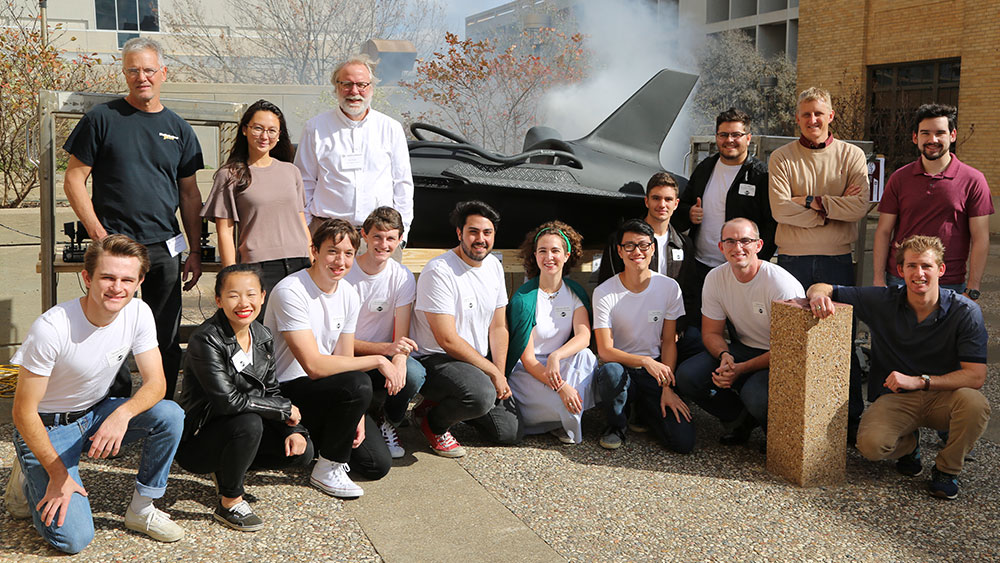
Students at Texas A&M University are bringing vintage into the future with a new virtual reality (VR) experience for aspiring engineers — the Retro Rocket.
Teams from the Department of Aerospace Engineering and J. Mike Walker ’66 Department of Mechanical Engineering have worked to repurpose an old metal rocket car from a 1950s carnival ride and turn it into a VR flight simulator. The end product will travel with Spark! PK-12, the College of Engineering’s STEM (science, technology, engineering and math) outreach group, to introduce young minds to the excitement of engineering.
The project idea originated from the rocket car’s donor, Eric Schulte, who also owns the historic local Hullabaloo Diner. Along with Jim Mabe, aerospace engineering visiting scholar from The Boeing Company, the duo formed the idea to transform the rare antique into an interactive experience to inspire the next generation of engineers.
With funding from Boeing, the student groups endeavored to turn the idea into reality. The aerospace students, a senior capstone design team advised by Dr. Darren Hartl, assistant professor in the department and director of the Multifunctional Materials and Aerospace Structures Optimization (M2AESTRO) VR Studio, kicked off the project.
“It was neat to have 10 intelligent, self-selected people in a room going after a mission,” said Hartl. “It felt just like a startup company every time I would walk into a team meeting.”
The “Retro Rocket” aerospace design team developed the flight simulator software and integrated VR hardware. After a year of planning, designing and developing, the Retro Rocket emerged as an immersive VR experience rooted in real-world dynamics.
The view from the cockpit
When the user sits in the cockpit and slips on the VR headset, they find themselves in the pilot’s seat of a maroon and white aircraft (keeping true to Texas A&M style). Their environment — a custom-built map of the Texas A&M College Station campus, embedded in mountainous terrain for added adventure. The pilot can fly freely over campus, but to add a fun engagement piece, large golden rings hover in the sky near the Retro Rocket. As an in-game challenge, the pilot can test their skills by flying through the rings, collecting as many points as possible.
“Something that’s fun will stick in your head at a young age, and you’ll remember that for a long time,” said Armando Gonzalez-Feuchter, member of the Retro Rocket team. “Kids want to be creative and make their own things, and we can show them aerospace is one way they can do that.”
Although entertainment is a high priority for the project to keep the young audience’s interest, it was also important to the team to introduce young students to some of the realistic mechanics of flight.
To fly the virtual rocket, the team integrated a physical yoke (aircraft steering wheel) that gives the user control over their virtual aircraft's speed, direction and altitude. Their steering in real life is reflected by the virtual yoke seen in the VR, turning left and right in sync with their hand movements. Along the dashboard, users can also see interactive indicators reflecting their speed and orientation, and if they look around outside of the aircraft, they can even see the vapor trails they leave behind, much like the real experience.
“It’s kind of the wow factor,” said team member Keaton Dodd. “Having something like this where they can put it in their mind that ‘aerospace engineers built this, and that’s cool.’”
In addition to the visual elements, the Retro Rocket team created fun and realistic audio to fully package the immersive environment. As the pilot flies, changing their speed and direction, they can hear wind, alarms and engine noises through the VR headset. The team even included haptic feedback that creates vibrations to bring the rumbles of the engine to life.
Like a roller coaster ride at an arcade, the end goal is to combine the VR experience they created with mimicked movement of the rocket car. To test and show how this integration can work, Retro Rocket engineers designed a small-scale model that informed a team of mechanical engineering students as they built the accompanying motion platform that the rocket car will be mounted on. The platform controls the rocket car's motions, emulating the experience seen by the pilot in the virtual environment.
“I really like the idea that this project has an actual product that will be used,” said team member Hannah Lehman. “One of the big appealing factors for me was that this would actually exist years after I (graduate).”
Since the original team completed their developments in the spring of 2020, a follow-up team of aerospace students has been handed the baton. They are completing the integration between the VR simulator software and the hardware needed to move the rocket and its pilot, as well as fine-tuning the user experiences based on K-12 teacher input.
It is envisioned that completing the fully developed flight simulator will be a group of architecture students, who will focus on replicating the aesthetics of the vintage rocket car, honoring its 1950s style while also showcasing Texas A&M.
The retro rocket ride, built by students for students, will be a memorable example of the exciting things one can do, create and be with an education in STEM.